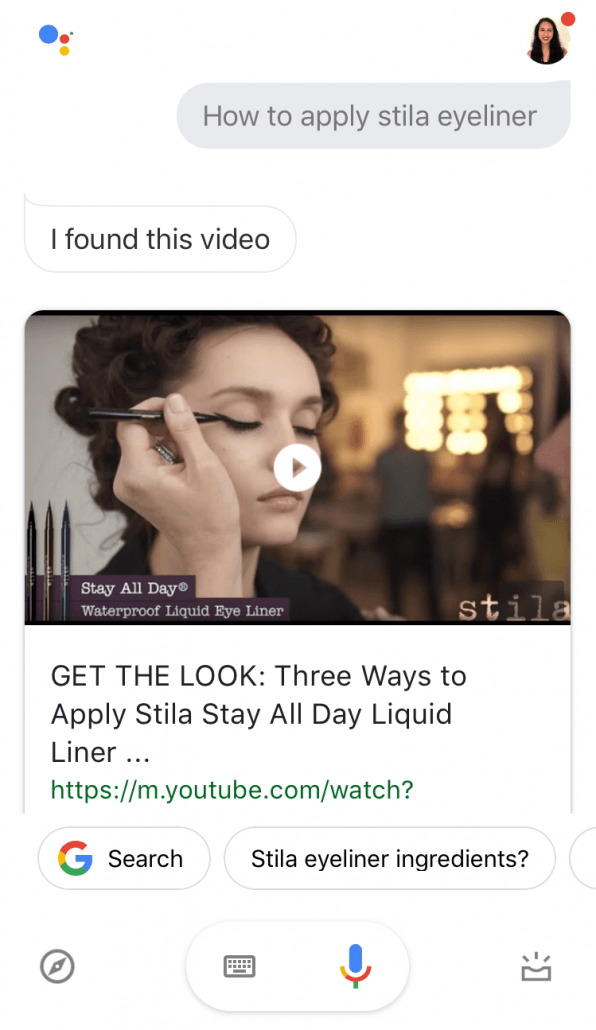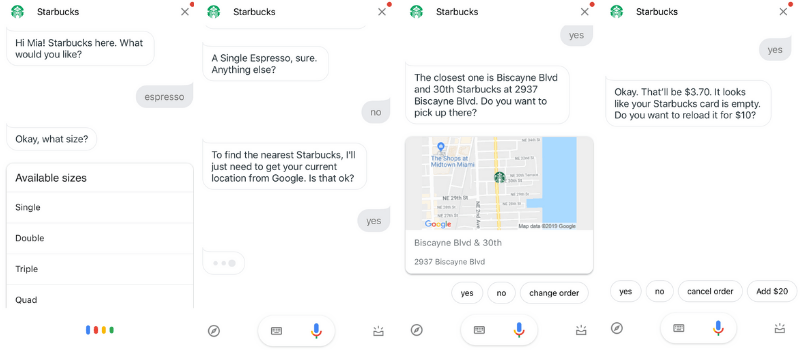Marketer’s Guide to Google Assistant: How to Leverage Google’s AI
AI products seem to be everywhere these days, and tech giants are investing heavily in creating and improving them. Google is no exception, with their unveiling of Google Assistant back in 2016. Since then, Google has come out with updates for their virtual assistant that have big implications for the digital marketing world.
We’ve already explored how digital marketers like ourselves should navigate the advent of voice search. Now we want to dive into how voice-powered virtual assistants, specifically Google Assistant, are changing the marketing game.
How will Google’s AI affect how users consume information, what effect has it already had for brands, and what can we do to leverage its marketing capabilities? We explore all of that and more here.
First thing’s first: what is Google Assistant?
Assistant is Google’s virtual assistant, or Google’s version of Siri, Cortana, or Alexa. Powered by voice or type search, Google Assistant can perform a wide range of tasks, including:
- Find information online, from restaurant bookings to weather and news
- Open apps
- Access information from your calendars
- Play music
- Control smart home devices
The benefit of using Google Assistant, as with other virtual assistants, is that users can execute a wide range of tasks via voice command. By enabling a hands-free experience, the Assistant offers users with a more frictionless way to complete their day-to-day tasks, from reading out a recipe while you’re elbow-deep in chicken to finding the cheapest gas station on your way to work.
Users can enable Google Assistant on an eligible Android, by simply touching and holding the home button. For iOS devices, the Google Assistant app can be downloaded from the App store.
Engaging visuals
What differentiates Google Assistant from the other virtual assistants is its recent visual redesign. The discover button offers suggested commands such as “Play ‘Billie Jean’” and “Translate ‘Good evening’,” alongside colorful icons, offering users with ideas for what to ask the Assistant to do. The homepage displays a curated summary of the user’s day, including the weather, traffic in your most-traveled routes, and any upcoming calendar events – much like a real personal assistant would.
The makeover also includes new tools for brands to extend the functionality of Actions through pre-loaded visual content. For example, brands can respond to user inputs with photos and videos, or supplement answers with gifs.
Brands can leverage the Assistant’s “rich responses” feature by creating visual content that not only answers the user’s question but also engages them in the process. If you’re a makeup company, for example, you can create YouTube tutorials for how to use a specific product. By creating delightful and helpful experiences, brands can build awareness and loyalty that will keep users coming back for more.

Streamlined transactions
In addition to its visual updates, Google Assistant also rolled out several features that streamline the user experience when interacting with 3rd-party fulfillment services. One of these features is Account linking with Google Sign-In, which allows users to sign into or create a new account with a third-party brand directly in the Assistant app while engaging in a brand action.
An example of a company taking advantage of this integration is Starbucks. Users can interact with the Assistant directly to link to their pre-existing Starbucks Rewards™ account, re-order a previous order, choose from menu items and pick up in store. According to TechCrunch, Starbucks doubled it’s conversion rate thanks to the Sign-In for Assistant feature.

Users can not only connect their accounts through the Assistant but also subscribe to services directly on the app. A company that takes advantage of subscription integration is Headspace. Users can choose from the meditation app’s selection of subscription services and pay directly on the Assistant app.
Google Sign-In enables seamless transactions through the Assistant, making it easier for brands to make money. As a marketer, it makes sense to present this feature to your development team, and see if they can create a Google Action that will enable your brand to streamline the payment process with its users.
What’s in store
In addition to its existing capabilities, Google rolled out a series of updates at CES in January:
Foreign language translation: with interpreter mode, the Assistant translates the user’s phrase in real time and reads it aloud.
Hotel booking and airline check-in: users can now check-in to United Airlines flights, and also book a hotel using the Assistant. Hotel bookings work with several hotel chains, including Choice Hotels, AccorHotels, InterContinental Hotels Group, Priceline, Expedia, Mirai, and Travelclick. Google foresees more airlines and hotels being integrated in the future.
Google Maps integration: while voice commands and search were available on Maps since last year, the Google Assistant capabilities have expanded to sending texts and playing music. This offers a more hands-free Maps experience, allowing users to focus on the road while the Assistant handles other tasks.
In addition to Google’s CES updates, there’s an even bigger potential development that looms in the distance. Let’s think about some widely-used technological platforms, such as Amazon, Facebook, and YouTube. What do they have in common? They all started as an ad-free experience, and have since begun offering paid advertising options. It’s only a matter of time before voice-powered virtual assistants start including sponsored ads in search results.
Recently, one user reported to Barry Schwartz that his Google Assistant voice query was met with a search ad result. Although it seems like it was a glitch, Google ominously stated: “we’re always testing new ways to improve the experience on phones, but we don’t have anything specific to announce right now.”
If voice assistants begin allowing sponsored ads, it would broaden the paid search playing field for product and service providers, following in the footsteps of other tech platforms.
Will sponsored ads deter users from Google Assistant? Seeing as Amazon, Facebook, and YouTube have 310 million, 2.32 billion, and 1.3 billion users respectively, I think it’s safe to conclude that ads don’t stop users from going on their favorite platforms. With Google Assistant’s overall usability and fun interface, along with its ever-expanding functionalities, means it is poised to become the virtual assistant of choice among Android and iOS users alike. And with 50% of searches projected to be voice-initiated by 2020, Google Assistant is something we’ll be keeping our eye on as we continue to develop our marketing strategies.
This article was written in collaboration with Mia Ballan.
Matthew Capala is a seasoned digital marketing executive, founder/CEO of Alphametic, a Miami-based digital marketing agency, author of “The Psychology of a Website,” dynamic speaker, and entrepreneur.




Leave a Reply
Want to join the discussion?Feel free to contribute!